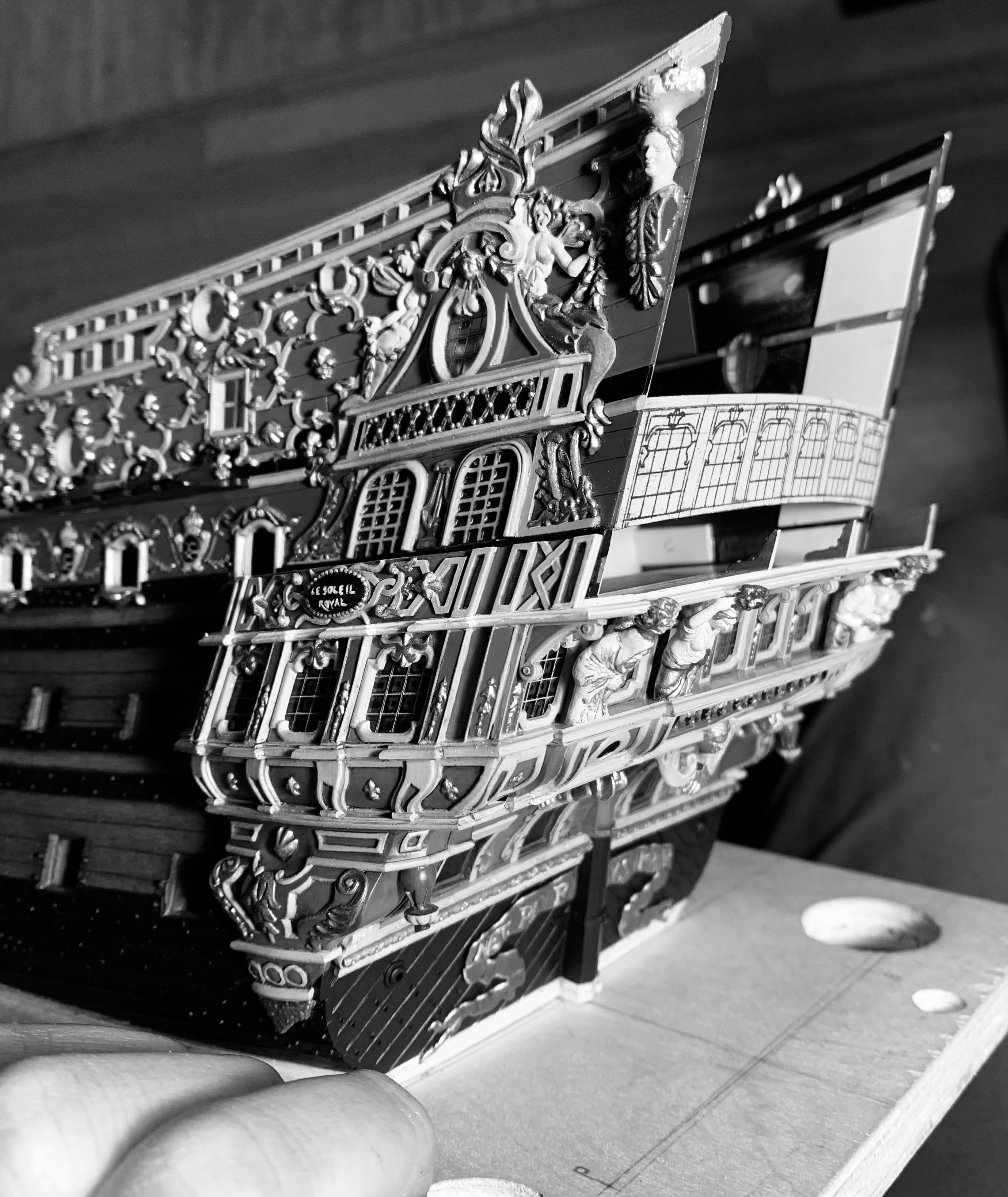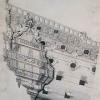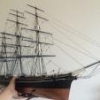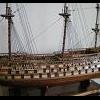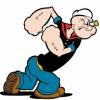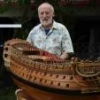-
Posts
3,220 -
Joined
-
Last visited
Reputation Activity
-
 Hubac's Historian got a reaction from baskerbosse in Wasa by md1400cs - FINISHED - Corel - 1:75
Hubac's Historian got a reaction from baskerbosse in Wasa by md1400cs - FINISHED - Corel - 1:75
Thanks, MD! Well, this sounds like essential reading for anyone that wants to more fully understand these ships for the machinery they were. I have one Hocker book on the Vasa - a bit more of a general overview of all the topics he expounds upon in these two volumes. Maybe one day, when I'm feeling a little wealthy, I'll invest in volume I. It is heartening that the people at the Vasa museum have done so much to try and understand the full import of the Vasa as an archeological find.
-
 Hubac's Historian got a reaction from CaptainSteve in Wasa by md1400cs - FINISHED - Corel - 1:75
Hubac's Historian got a reaction from CaptainSteve in Wasa by md1400cs - FINISHED - Corel - 1:75
Thanks, MD! Well, this sounds like essential reading for anyone that wants to more fully understand these ships for the machinery they were. I have one Hocker book on the Vasa - a bit more of a general overview of all the topics he expounds upon in these two volumes. Maybe one day, when I'm feeling a little wealthy, I'll invest in volume I. It is heartening that the people at the Vasa museum have done so much to try and understand the full import of the Vasa as an archeological find.
-
 Hubac's Historian got a reaction from BLACK VIKING in Wasa by md1400cs - FINISHED - Corel - 1:75
Hubac's Historian got a reaction from BLACK VIKING in Wasa by md1400cs - FINISHED - Corel - 1:75
Thanks, MD! Well, this sounds like essential reading for anyone that wants to more fully understand these ships for the machinery they were. I have one Hocker book on the Vasa - a bit more of a general overview of all the topics he expounds upon in these two volumes. Maybe one day, when I'm feeling a little wealthy, I'll invest in volume I. It is heartening that the people at the Vasa museum have done so much to try and understand the full import of the Vasa as an archeological find.
-
 Hubac's Historian reacted to md1400cs in Wasa by md1400cs - FINISHED - Corel - 1:75
Hubac's Historian reacted to md1400cs in Wasa by md1400cs - FINISHED - Corel - 1:75
Peter, Dave: Thanks appreciated. I have decided to do something about the "problem" that I have with those two blocks. I'll update when I have a plan.
Hubac: Very kind of you to follow along. Your work is indeed very impressive.
Here is the answer to your question.
MORE than you probably ever wanted to know
VASA II will be the companion to the first book.
Here I copied and pasted from the Vasa specific forum Fred Hocker's information; for us Vasa builders it has been so frustrating waiting for this "bible" of the ship's rigging.
=================================================
Since everyone wants to know, I thought I would start a thread here for status updates on the Vasa rigging volume (Vasa II). PS: thread is from 2014
Part 1 – The archaeological evidence (Hocker)
The first part of the book presents and analyzes the find material from Vasa which is relevant to the understanding of how the ship was rigged and sailed. Chapters are organized by functional groups and vary in length, depending on the amount of find material. In each chapter, the relevant finds are described and illustrated in sufficient detail to allow useful conclusions to be drawn. Due to the number of finds and the fact that many of them were made on a production basis in specialized workshops, it is not necessary to present every object individually – readers are referred to the Vasa Museum’s online finds database for such information.
Chapter 2: Hull, including construction (Hocker)
This covers the fixed part of the rigging material which was part of the ship’s structure or fastened permanently to it:
1. Mast steps and partners
2. Chainwales
3. Bitts
4. Catheads and fish davit
5. Fixed sheaves in bulwarks, chesstree, etc.
6. Belaying devices (kevels, pinrails, etc.)
7. Ironwork
Chapter 3: Spars (Hocker, Nilsson)
Spars are the masts and yards, the wooden poles which carry the sails and allow them to be adjusted to meet the wind at an optimum angle and transfer the wind’s energy to the ship.
Chapter 4: Tops (Hocker)
Tops are the round platforms at the heads of the masts which provide working space for handling the rigging as well as sharpshooter positions in battle.
Chapter 5: Tackle (Howe, Lindblom, Hocker)
Tackle is all of the movable wooden and metal parts of the rigging which connect the sails to the spars and the hull and allow them to be raised, lowered and controlled
1. Deadeyes (Lindblom)
2. Blocks (Howe)
3. Parrels (Hocker)
4. Euphroes (Hocker)
5. Fairleads (Hocker)
6. Other (Hocker)
Chapter 6: Rope (Magnus, Seeberg, Hocker)
The rope represents one of the groundbreaking studies in this volume. It is a common find on archaeological sites but rarely presented or studied in detail, so this chapter receives special emphasis and extra material on the materials and manufacturing processes.
Chapter 7: Sails (Bartoš, Bengtsson)
The sails are the most unusual find among all of the artefacts found with Vasa, and so this chapter is also given extra weight.
Chapter 8: Capstans and windlass (Donohue)
Capstans are the human-powered machines mounted on the deck, which make it possible to lift the heavy weights of the anchors and sails.
Chapter 9: Steering (Hocker)
Vasa preserves the only known complete example of the whipstaff steering system, the most common form of steering gear on large ships from the late Middle Ages until about 1700.
Chapter 10: Anchors (Hocker, Ward)
Anchors are essential for operation of the ship, and all parts of the anchoring system survive, including anchors, stocks, buoys and cables.
Chapter 11: Navigation equipment (Hocker, Pipping)
The navigation equipment (compasses,timekeeping devices, sounding leads, etc.) is included in this volume as it is essential to sailing the ship.
Chapter 12: Reconstructing Vasa’s rig (Hocker, Pipping, Stolt)
This chapter synthesizes all of the archaeological evidence and comparative material in a reconstruction of the rigging of Vasa.
Part 2 – Rigging and Sailing Vasa (Pipping)
The second part takes the archaeological data as the departure point for a more wide-ranging contextual examination of the rigging and sailing of a large ship such as Vasa. Where the first part focused more on objects, this part focuses on process and meaning to explore the relevance of this find to larger questions of ergonomics and organisation, resource utilization, and operational implications.
Chapter 13: Ship performance and the sailing environment of the Baltic Sea
The geographic and climatological context is examined, as are the operational environment and the strategic limits within which the ship functioned. The essential parameters of the ship’s performance, such as speed, stability and weatherliness, are discussed in order to establish how well the ship was suited to its likely sailing routes and conditions.
Chapter 14: Money, materials and men (Hocker)
This chapter concentrates on the administrative framework for outfitting Swedish naval vessels and the resource base from which the raw material were drawn, as well as the organization of the processes of producing rigging and assembling it into a functioning rig. It addresses the economic, environmental and social factors influencing the production of sails, rope and tackle. It makes use of the historical documents relating to the operation of the Stockholm navy yard, where the ship was rigged and fitted out, as well as the remains of the ship itself.
Chapter 15: Rigging the ship
The process of rigging, starting with a bare hull and progressing to a fully outfitted ship ready to sail, is followed in detail, with attention on the manpower requirements, the organizational challenges, and the technical limitations imposed by the particular materials and methods used.
Chapter 16: Sailing the ship
The chapter opens with an analysis of crew organization and Vasa’s one, brief sailing passage for what they say about the ship’s performance and the level of competence of the crew. The rest of the chapter follows a typical passage across the Baltic, based on the sequence of sailing orders recorded for the Swedish navy in the 17th century. It presents the different maneuvers which the ship was expected to perform and how they should have been carried out. The ergonomic requirements are analyzed, and the ship is placed in the context of what is known about Baltic sailing in the 17th century.
Chapter 17: Sailing a modern reconstruction (Morgens and Litcofsky)
Trials made using the modern reconstruction Kalmar Nyckel both confirmed certain hypotheses about the how this rig functioned and raised new questions about the nature of the evidence used to study 17th-century seamanship. The relevance of Kalmar Nyckel for the study of how Vasa sailed is studied, as are the basic limitations of experimental archaeology.
Chapter 18: Conclusions (Pipping and Hocker)
-
 Hubac's Historian got a reaction from popeye the sailor in Wasa by md1400cs - FINISHED - Corel - 1:75
Hubac's Historian got a reaction from popeye the sailor in Wasa by md1400cs - FINISHED - Corel - 1:75
I am quietly enjoying this excellent build-log, and I am hoping that you guys can enlighten me on something that I've seen mentioned a few times here:
What is, or what will be Vasa II? A new kit? A full-size replica project with appropriate draft and beam, in order to actually sail?
Whatever it is, it sounds interesting.
-
 Hubac's Historian got a reaction from mtaylor in Soleil Royal by Hubac's Historian - Heller - An Extensive Modification and Partial Scratch-Build
Hubac's Historian got a reaction from mtaylor in Soleil Royal by Hubac's Historian - Heller - An Extensive Modification and Partial Scratch-Build
Thank you, Cedric! So far, I'm only two thirds of the way through one hull half, and that doesn't include the upper bulwarks. I could project the math and figure out, roughly, how many holes there are a side, however, I don't have the thing in front of me, right now. My guestimate would be somewhere in-between 2,000-2,500 per hull half. The upper bulwarks will add considerably to that. Maybe somewhere in the range of 8,000 holes when all is said and done. It's okay, time is still on my side.
Either today or tomorrow, the spare parts that Henry (Popeye2Sea) has so generously donated to my experimental hull expansion project - "Le Franken-Royal" - should arrive. The hull parts he is sending me were too badly warped to make a model from, but the small bits I need for the bow and stern should be perfectly useable. I'll use what's left to work up paint samples. I really want to see what impact different primer colors (flat black, primer grey, flat white) have on this color Ventre de Biche.
When are you sending me updates, Cedric?
-
 Hubac's Historian got a reaction from FrankWouts in Le Soleil Royal by Nek0 - 1/72 - Marc Yeu
Hubac's Historian got a reaction from FrankWouts in Le Soleil Royal by Nek0 - 1/72 - Marc Yeu
I was kind of hoping you would disappoint me - even just a little bit - so I could feel a little better about my relative talents and abilities 😉. You know - maybe, a slightly open seam, or worse - the use of off-color putty as filler, or maybe an errant fastenner or two. Maybe a weird dip or bump in the hull. But nothing. Nope. Nada. Zip! Just a seamless work of utterly awesome perfection 👏👏!!
Marc, I can see a little better the arc of your sheerline, in these pictures, and I think that it looks really very good. Maybe it could drop a liiiiiittle more, but it is not as straight seeming as I thought before. It's just a problem of perspective, where none of these pictures focuses on the rise of the sheer, so it is difficult to perceive.
One little bit of fun, is to use the screen margin of my phone, to scroll down (on several pics) so that the ship appears to sit on her waterline. The figure she cuts in this view is absolutely a convincing portrait of a 17th Century first-rate ship. Even without all of the ornamental embellishments, one can see where this is headed. And that is not to minimize the form of the lively works, which display perfect symetry and a sense of draft befitting of such a heavily armed ship.
BRAVO, Marc!!
-
 Hubac's Historian reacted to CédricL in Soleil Royal by Hubac's Historian - Heller - An Extensive Modification and Partial Scratch-Build
Hubac's Historian reacted to CédricL in Soleil Royal by Hubac's Historian - Heller - An Extensive Modification and Partial Scratch-Build
Hello Marc,
That's a great job you did !
(and something I will not try I think, how many holes ?)
-
 Hubac's Historian reacted to CédricL in Le Soleil Royal by Nek0 - 1/72 - Marc Yeu
Hubac's Historian reacted to CédricL in Le Soleil Royal by Nek0 - 1/72 - Marc Yeu
As great as usual !
Que dire de plus....
-
 Hubac's Historian reacted to yancovitch in Le Soleil Royal by Nek0 - 1/72 - Marc Yeu
Hubac's Historian reacted to yancovitch in Le Soleil Royal by Nek0 - 1/72 - Marc Yeu
beautiful beautiful beautiful!.....and...no....no one can work so meticulously, so fast...............either you have a bunch of elves working for you at night......or..... your ship is really already completed, and you're just posting shots of the build as the days go by.............
it's just too much for me...i may not be able to look at it anymore kinda like if Christ came down and manifested in a blaze of light right now.....many, if not most, would shriek, and cover their eyes, and hide....all their shortcomings and sins being so exposed...
it is kind of a miracle to me.........i'll keep looking, but i'll be at a loss for words, so i'll just be clicking on ....like.... from now on
apologies, if i'm over reacting...cheers.............
-

-
 Hubac's Historian reacted to John Allen in Le Soleil Royal by Nek0 - 1/72 - Marc Yeu
Hubac's Historian reacted to John Allen in Le Soleil Royal by Nek0 - 1/72 - Marc Yeu
All I can say IMPRESSIVE. Kudos on a scale from 1 to 10 a 15
-
 Hubac's Historian reacted to Baker in Le Soleil Royal by Nek0 - 1/72 - Marc Yeu
Hubac's Historian reacted to Baker in Le Soleil Royal by Nek0 - 1/72 - Marc Yeu
Very beautiful and thoughtfully done
Félicitations à vous !
-
 Hubac's Historian got a reaction from Nek0 in Le Soleil Royal by Nek0 - 1/72 - Marc Yeu
Hubac's Historian got a reaction from Nek0 in Le Soleil Royal by Nek0 - 1/72 - Marc Yeu
I was kind of hoping you would disappoint me - even just a little bit - so I could feel a little better about my relative talents and abilities 😉. You know - maybe, a slightly open seam, or worse - the use of off-color putty as filler, or maybe an errant fastenner or two. Maybe a weird dip or bump in the hull. But nothing. Nope. Nada. Zip! Just a seamless work of utterly awesome perfection 👏👏!!
Marc, I can see a little better the arc of your sheerline, in these pictures, and I think that it looks really very good. Maybe it could drop a liiiiiittle more, but it is not as straight seeming as I thought before. It's just a problem of perspective, where none of these pictures focuses on the rise of the sheer, so it is difficult to perceive.
One little bit of fun, is to use the screen margin of my phone, to scroll down (on several pics) so that the ship appears to sit on her waterline. The figure she cuts in this view is absolutely a convincing portrait of a 17th Century first-rate ship. Even without all of the ornamental embellishments, one can see where this is headed. And that is not to minimize the form of the lively works, which display perfect symetry and a sense of draft befitting of such a heavily armed ship.
BRAVO, Marc!!
-
 Hubac's Historian got a reaction from docidle in Soleil Royal by Hubac's Historian - Heller - An Extensive Modification and Partial Scratch-Build
Hubac's Historian got a reaction from docidle in Soleil Royal by Hubac's Historian - Heller - An Extensive Modification and Partial Scratch-Build
I have been busily mapping out and drilling nail impressions in the deadworks. I haven't put a caliper to the bit I'm using, but suffice it to say that it is near impossibly small. There was some trial and error to arrive at a bit that left a plausible impression, and that didn't overheat and clog with melted plastic too quickly. I still have to stop the Dremel and clear the bit every 15 holes, or so, but that's much better than the 5-8 range.
As a quide to my spacing, I am using the exposed timber heads of the caprail. This works out to about 5/16", on center for the most part, but there are several instances where I'll have to run a row or two at 1/4" spacing, in order to maintain overall consistency.
In the waist, and for about six ports aft of the waist ladder, the nailing pattern runs perpendicular to the waterline. With the hull half sitting on the table, I simply use a try square to align my blue painter's tape guide for keeping my lines nice and straight. As the sheer rises, further aft, it has become necessary to skew my tape guides ever so slightly, by eye, so that my nailing pattern doesn't run too far askew of the gunport framing, with which it should remain parallel.
After much deliberation, I have decided to mimic the alternating nailing pattern that Dan Pariser used for his very thoroughly researched and excellent Queen Anne's Revenge. I have known Dan for a long time now, and there is nothing he does without considerable thought and research.
Here are a few pics of my progress, so far. They are hard to make out in the black plastic, and after priming and painting they should just barely show as faint impressions.
-
 Hubac's Historian got a reaction from FrankWouts in HMS ROYAL KATHERINE 1664 by Doris - 1/55 - CARD
Hubac's Historian got a reaction from FrankWouts in HMS ROYAL KATHERINE 1664 by Doris - 1/55 - CARD
Hi Doris,
Yesterday, I was surfing through Pinterest, as I often do, when I found this image of a VDV ship portrait. It was not specifically identified as the RK, but it certainly seems to be her. If you haven't seen this, I thought you might appreciate the wealth of detail that is apparent, here:
-
 Hubac's Historian reacted to Nek0 in Le Soleil Royal by Nek0 - 1/72 - Marc Yeu
Hubac's Historian reacted to Nek0 in Le Soleil Royal by Nek0 - 1/72 - Marc Yeu
I'm back for the following pictures. Today I show the very boring step of planking the hull. One have to be very patient and very precise in the assembly of the different pieces to achieve a good result. At first I drew the planking on the hull to be sure it looks good. Then I drew the frame so I can place the nails where they should be. And the began the very long process of the planking !
At last I dyed the waterline with ebony color, which is not black but a very good looking dark brown.
Hope you like it !!!
-
 Hubac's Historian got a reaction from Elijah in Le Soleil Royal by EJ_L - FINISHED - Sergal - Scale 1:77 - 1669 Version
Hubac's Historian got a reaction from Elijah in Le Soleil Royal by EJ_L - FINISHED - Sergal - Scale 1:77 - 1669 Version
Well, I might have to give that a try. The Testers liquid cement doesn't bother me much, but I do ventilate pretty aggressively. Would be good to have a backup option.
-
 Hubac's Historian got a reaction from docidle in Soleil Royal by Hubac's Historian - Heller - An Extensive Modification and Partial Scratch-Build
Hubac's Historian got a reaction from docidle in Soleil Royal by Hubac's Historian - Heller - An Extensive Modification and Partial Scratch-Build
The funny thing is that I just sent Marc a PM, discussing this paint issue, among other subjects. But, I had not yet read his last entry into my build log. For the sake of the public conversation, I will copy and paste the relevant portion of that message - the irony can't be beat!
~~~
it seems that a number of well-known French models make use of the color (ventre de biche), as a painted color, on the dead works: Le Fleuron (red, yellow ochre, ventre de biche), Le Temeraire (Tusset model), and Le Ville de Paris are three well-known examples. But then, I was looking at the replica of Hermione, and she too appears to have her deadworks painted in this brownish, yellow color. And then, I looked once again, at a second Peter Monamy painting of the destruction of SR, which focuses on the bow:
Here, too, ventre de biche appears to be a deliberate and applied color. What all of this means for me is that I will have to work up a series of paint samples; one that is a lightly weathered, natural wood tone, one that is VDB freshly applied, and one that is VDB lightly washed to show a little sea grime. As this is going to be a diorama model, I just want to avoid an overly painted looking model; sort of the way a girl wants to look as though she isn't really wearing make-up, if that makes sense to you.
~~~
And, by the way, I also agree with Marc that one must first understand what was, or likely was, before taking any divergent paths. The question of combining yellow ochre for much of the moulded work with gold for the important sculptural work would be an artistic decision for me on the basis that those golden ornaments would then stand out better, in relief; they would be more impact-full.
-
 Hubac's Historian got a reaction from docidle in Soleil Royal by Hubac's Historian - Heller - An Extensive Modification and Partial Scratch-Build
Hubac's Historian got a reaction from docidle in Soleil Royal by Hubac's Historian - Heller - An Extensive Modification and Partial Scratch-Build
Tonight, I finished up the gun carriage tackle through-bolts. The following series of pictures attempt to show the impact of adding this detail. Only the second picture manages to capture the bolt within the washer, such are their size. I'm not sure whether it is a correct detail, but I also decided to bolt the edges of the anchor lining. Although, I now realize that the linings would have simply been a double thickness plank trimmed to the shape of the lining, I decided to bolt the "edges" anyway. Next, I will experiment with some sort of shallow nailing pattern for the rest of the planking. I think if I chuck the tiniest drill bit I own into a pin vise, and simply make a few turns into the plastic, such that the bit's point just makes an impression, that that might be enough to show some kind of fastening pattern. The linings will be "nailed" between edge bolts.
P.S. I'm not sure why the above text is underline formatted, because I did not do that deliberately, and underline in the toolbar is not highlighted, when you select text in that block. I can't seem to correct it, so there it is.
If you look closely, you'll see that I even placed carriage tackle bolts on the skids that frame the ladder, because the skid frames took up all available space, immediately next to the affected ports. I'm not sure whether that is a correct detail, either, but it seemed like the sort of accommodation a builder would make under the circumstances.
I'm approaching the end of my lower hull modifications. Those are a lot of tiny bits of plastic! After the "nailing," I'll do the bow and stern extensions, re-locate the hawse-holes, and then I will probably focus on making the alterations and additions to the upper bulwarks. After that, I will have to figure out my drawing problem.
-
 Hubac's Historian got a reaction from hexnut in Soleil Royal by Hubac's Historian - Heller - An Extensive Modification and Partial Scratch-Build
Hubac's Historian got a reaction from hexnut in Soleil Royal by Hubac's Historian - Heller - An Extensive Modification and Partial Scratch-Build
I have been busily mapping out and drilling nail impressions in the deadworks. I haven't put a caliper to the bit I'm using, but suffice it to say that it is near impossibly small. There was some trial and error to arrive at a bit that left a plausible impression, and that didn't overheat and clog with melted plastic too quickly. I still have to stop the Dremel and clear the bit every 15 holes, or so, but that's much better than the 5-8 range.
As a quide to my spacing, I am using the exposed timber heads of the caprail. This works out to about 5/16", on center for the most part, but there are several instances where I'll have to run a row or two at 1/4" spacing, in order to maintain overall consistency.
In the waist, and for about six ports aft of the waist ladder, the nailing pattern runs perpendicular to the waterline. With the hull half sitting on the table, I simply use a try square to align my blue painter's tape guide for keeping my lines nice and straight. As the sheer rises, further aft, it has become necessary to skew my tape guides ever so slightly, by eye, so that my nailing pattern doesn't run too far askew of the gunport framing, with which it should remain parallel.
After much deliberation, I have decided to mimic the alternating nailing pattern that Dan Pariser used for his very thoroughly researched and excellent Queen Anne's Revenge. I have known Dan for a long time now, and there is nothing he does without considerable thought and research.
Here are a few pics of my progress, so far. They are hard to make out in the black plastic, and after priming and painting they should just barely show as faint impressions.
-
 Hubac's Historian reacted to Nek0 in Soleil Royal by Hubac's Historian - Heller - An Extensive Modification and Partial Scratch-Build
Hubac's Historian reacted to Nek0 in Soleil Royal by Hubac's Historian - Heller - An Extensive Modification and Partial Scratch-Build
It looks very good !!
-
 Hubac's Historian got a reaction from yancovitch in Soleil Royal by Hubac's Historian - Heller - An Extensive Modification and Partial Scratch-Build
Hubac's Historian got a reaction from yancovitch in Soleil Royal by Hubac's Historian - Heller - An Extensive Modification and Partial Scratch-Build
I have been busily mapping out and drilling nail impressions in the deadworks. I haven't put a caliper to the bit I'm using, but suffice it to say that it is near impossibly small. There was some trial and error to arrive at a bit that left a plausible impression, and that didn't overheat and clog with melted plastic too quickly. I still have to stop the Dremel and clear the bit every 15 holes, or so, but that's much better than the 5-8 range.
As a quide to my spacing, I am using the exposed timber heads of the caprail. This works out to about 5/16", on center for the most part, but there are several instances where I'll have to run a row or two at 1/4" spacing, in order to maintain overall consistency.
In the waist, and for about six ports aft of the waist ladder, the nailing pattern runs perpendicular to the waterline. With the hull half sitting on the table, I simply use a try square to align my blue painter's tape guide for keeping my lines nice and straight. As the sheer rises, further aft, it has become necessary to skew my tape guides ever so slightly, by eye, so that my nailing pattern doesn't run too far askew of the gunport framing, with which it should remain parallel.
After much deliberation, I have decided to mimic the alternating nailing pattern that Dan Pariser used for his very thoroughly researched and excellent Queen Anne's Revenge. I have known Dan for a long time now, and there is nothing he does without considerable thought and research.
Here are a few pics of my progress, so far. They are hard to make out in the black plastic, and after priming and painting they should just barely show as faint impressions.
-
 Hubac's Historian reacted to testazyk in Le Soleil Royal by EJ_L - FINISHED - Sergal - Scale 1:77 - 1669 Version
Hubac's Historian reacted to testazyk in Le Soleil Royal by EJ_L - FINISHED - Sergal - Scale 1:77 - 1669 Version
I let the test sit overnight and the results are 100% success! It was two flat pieces of smooth plastic and they've bonded nicely. Hope this helps.
-
 Hubac's Historian got a reaction from Elijah in Le Soleil Royal by EJ_L - FINISHED - Sergal - Scale 1:77 - 1669 Version
Hubac's Historian got a reaction from Elijah in Le Soleil Royal by EJ_L - FINISHED - Sergal - Scale 1:77 - 1669 Version
I appreciate your "MythBusters" experimental mentality. I'll be looking for your empiracle update.

